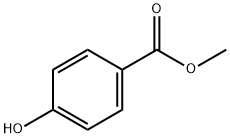Hexythiazox solution , analyticalstandard,10μg/mlinacetone , 78587-05-0
Synonym(s):
trans-5-(4-Chlorophenyl)-N-cyclohexyl-4-methyl-2-oxothiazolidine-3-carboxamide)
CAS NO.:78587-05-0
Empirical Formula: C17H21ClN2O2S
Molecular Weight: 352.88
MDL number: MFCD17012610
EINECS: 616-638-3
| Pack Size | Price | Stock | Quantity |
| 1ML | RMB81.60 | In Stock |
|
| others | Enquire |
PRODUCT Properties
| Melting point: | 108-108.5°C |
| Boiling point: | 128°C (rough estimate) |
| Density | 1.1354 (rough estimate) |
| refractive index | 1.6100 (estimate) |
| Flash point: | 100 °C |
| storage temp. | 0-6°C |
| Water Solubility | Insoluble in water |
| solubility | DMF: 5 mg/ml,DMF:PBS(pH 7.2)(1:1): 0.5 mg/ml,DMSO: 2 mg/ml,Ethanol: 0.2 mg/ml |
| form | Solid |
| pka | 12.77±0.20(Predicted) |
| color | White to Almost white |
| BRN | 9001643 |
| CAS DataBase Reference | 78587-05-0(CAS DataBase Reference) |
| EPA Substance Registry System | Hexythiazox (78587-05-0) |
Description and Uses
Hexythiazox is an acaricide that induces toxicity in larvae of the two-spotted spider mite T. urticae and the European red mite P. ulmi (LC50s = 0.15-0.58 and 0.23-0.62 mg AI/L, respectively), as well as in the summer and winter eggs of P. ulmi (LC50s = 2.2 and 20 ppm, respectively). Hexythiazox is toxic to bluegill (L. macrochirus; LC50 = 3.2 mg/L) and D. magna (EC50 = 0.36 mg/L) but not rats (LD50 = >5,000 mg/kg). Formulations containing hexythiazox have been used in the control of mites in agriculture.
Hexythiazox is a mite growth regulator and a thiazolidine based acaricide that has long-lasting effects against many kinds of mites and is applied at any stage of the plant growth from budding to frui ting.
Safety
| Symbol(GHS) |   GHS07,GHS09 |
| Signal word | Warning |
| Hazard statements | H332-H410 |
| Precautionary statements | P261-P271-P273-P304+P340+P312-P391-P501 |
| Hazard Codes | N |
| Risk Statements | 50/53 |
| Safety Statements | 60-61 |
| RIDADR | UN 3077 |
| WGK Germany | 2 |
| RTECS | XJ5396000 |
| HS Code | 29341000 |
| Hazardous Substances Data | 78587-05-0(Hazardous Substances Data) |
| Toxicity | LD50 in male, female mice, male, female rats (mg/kg): all >5000 orally; all >5000 dermally (Nippon Soda Co.) |



